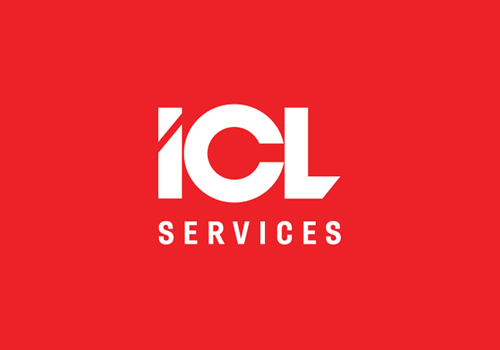Готово!
Скоро материал придет на указанную электронную почту. Также подписывайте на нас в Facebook
Ok
4 tools to enhance customer-oriented approach in IT outsourcing
The company’s commitment to building a mutually beneficial relationship with the client is easy to understand: the customer-oriented approach shows the business in a positive way, attracts new customers and maintains relationships with existing customers, and boosts sales. However, activities in building mutually beneficial relationships with customers involve ongoing development and implementation of continuous multi-client programs to improve quality of services.
We have several tools, or technologies, that will enable the company to be more focused on the client’s interests.
«Lean» approach in the interests of clients
In December 2013, ICL Services launched implementation of lean production tools aimed at continuous improvement in terms of understanding and meeting the clients’ requirements and implemented it through involvement of all employees in the process. There are 7 principles which help to improve performance and become more customer-oriented in the long term:
- Understand the needs. The process should be built from the point of view of creating a maximum value for our customers.
- Involve every employee. Organization of Communication Cell meetings within the method helps to involve every employee and effectively share information about challenges and opportunities to maintain continuous improvement of business processes.
- Visualize the process. The managers and leaders of Communication Cell meetings should, by involvement of all employees, seek to establish a system of business processes transparency, where each employee understands how he/she and his/her colleagues are involved in the process of creating a value for the customer.
- Use personal experience. It helps to learn from the mistakes and work better day after day.
- Identify KPI. Provision of services to clients includes a large number of internal processes. In order to reach the best possible end result for the customer, all these internal processes should be controlled and optimized. KPI combined with using the Visualize the Process principle helps to understand how our actions in fact affect the process improvement.
- Eliminate the wastes in the process. Checking each step of the process for presence of main types of wastes, i.e. activities that require resources but do not create value for our customers, and their removal.
- Standardize business processes. Documented proof of achievements in terms of increasing the business processes efficiency. It helps to share best practices within the company, maintain the achievements, and provide a basis for further improvements.
Thus, a constant search for ways to improve processes with the involvement of all personnel of the company and continuous contact with customers for understanding and full implementation of their requirements become the standard practice in the company, and this is the first important step in customer-oriented approach.
Non-stop monitoring of IT infrastructure
With the customer’s consent, a constant monitoring of the IT infrastructure is carried out during the process of providing services to capture the state of the IT infrastructure at any moment including historical data. This allows us to make preventive decisions and reliably maintain a high level of services.
Moreover, the monitoring system can be integrated with the ITSM system. In this case, the incident for the recorded event is created automatically and almost immediately, and monitoring team is not necessary at all, which entails a further reduction of the service costs for the customer.
System approach
Working with major customers we often face a need to perform similar repetitive tasks on multiple devices with batch configuration changes and regular or one-off collection of multi-type statistics. These tasks make a substantial proportion of labor costs for the infrastructure maintenance and take considerable time. Therefore the project of automation for a large number of supported servers significantly increases the productivity of system administrators. One of the key advantages of this solution for customers is absence of license costs, which, as a rule, comprise the biggest share of the ownership cost for such systems. The solution is based on open source products which we have integrated into a single module and adopted for solution of the tasks which can show benefits of automation to the maximum extent. The solution has incorporated our long-term experience in IT infrastructure support and the best industry practices.
An important feature for the customer is the ability to adapt solutions to its infrastructure. To do this, the ICL Services’ specialists identify specific tasks for a particular infrastructure, evaluate effect of their automation, and implement the required functions at the start-up of the system. Being the ultimate developer of the solution, we possess all the opportunities for its development. But we do not stand still, and the solution is constantly being improved to remain relevant despite variations of the market requirements.
This tool enables us to improve the customer satisfaction by 30% reduction of direct costs for server support.
Smart automation
The performance analysis of a support service in a large industrial enterprise showed that monthly number of incidents that occur in the IT infrastructure is about 2,000. Approximately 60% of these incidents can be automated through flexible and sustainable approach to the understanding of the machine, or cognitive architecture (CA). As a result of gained experience and our research we have developed basic structural mechanisms of understanding of the machine which are sufficient for the automated processing of up to 50% of incidents through the Service Desk for remote support of IT infrastructures. So, these are modern technologies of smart automation which are becoming an important factor in building customer-oriented approach, along with the C-Sat level.
For this purpose ICL Services has developed and operates a software technology platform which includes:
- Services for data processing/storage centers;
- Services for end client services;
- Technical maintenance services;
- Maintenance and repair services;
- Network and telecommunications services;
- Remote services for infrastructure support.
The main purpose of organic development of the technological platform is the system enhancement through introduction of our own developments in the field of the Artificial Intelligence applications through creation of flexible and sustainable implementation of the cognitive architecture (CA). The key requirements of the cognitive architecture (CA) are the ability for social interactions and automated module of remote support of IT infrastructures for handling the incoming incidents with minimal involvement of 1st & 2nd line support engineers.
These 4 advanced tools help ICL Services to not only maintain its success in implementation of the multi-client programs oriented to service improvement, but also achieve excellence in internal processes of the company and reach a new level of development and competitiveness.
Stay informed
Subscribe to our newsletter and keep up with our latest news

